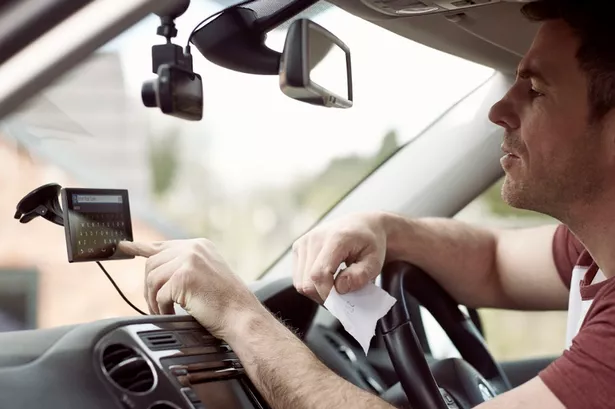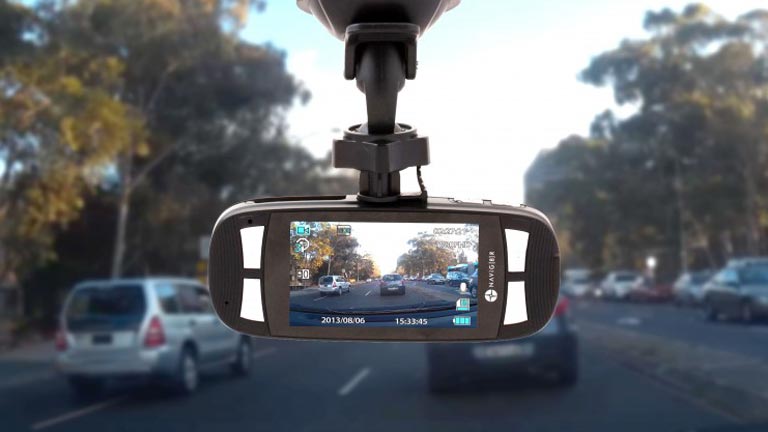-
Table of Contents
- Introduction
- The Benefits of Dashcam Usage in Australia: How It Can Help Keep You Safe on the Road
- Understanding the Legal Implications of Dashcam Usage in Australia
- The Pros and Cons of Dashcam Usage in Australia: What You Need to Know
- Dashcam Usage in Australia: What You Need to Know About Insurance Coverage
- Dashcam Usage in Australia: Tips for Getting the Most Out of Your Dashcam
“Stay informed and stay safe: Get the facts on Dashcam Usage in Australia!”
Introduction
Dashcam usage in Australia is becoming increasingly popular as a way to protect drivers from fraudulent insurance claims and to provide evidence in the event of an accident. Dashcams are small cameras that are mounted on the dashboard or windshield of a vehicle and record video footage of the road ahead. Dashcam footage can be used to prove who is at fault in an accident, or to provide evidence of dangerous driving. In Australia, there are certain laws and regulations that govern the use of dashcams, and it is important to be aware of these before using one. This article will provide an overview of the laws and regulations surrounding dashcam usage in Australia, as well as tips for using a dashcam safely and responsibly.
The Benefits of Dashcam Usage in Australia: How It Can Help Keep You Safe on the Road
Dashcams are becoming increasingly popular in Australia, and for good reason. Dashcams provide drivers with a range of benefits, from providing evidence in the event of an accident to helping drivers stay safe on the road. In this article, we will explore the benefits of dashcam usage in Australia and how it can help keep you safe on the road.
Dashcams provide drivers with a reliable source of evidence in the event of an accident. In the event of a crash, dashcam footage can be used to prove who was at fault and provide an accurate account of the incident. This can be invaluable in helping to resolve insurance claims and other legal disputes. Dashcam footage can also be used to identify reckless drivers and help law enforcement take appropriate action.
Dashcams can also help drivers stay safe on the road. Dashcams can be used to monitor the behaviour of other drivers, alerting drivers to potential hazards and helping them to avoid dangerous situations. Dashcams can also be used to monitor the performance of a vehicle, alerting drivers to any potential mechanical issues that may need to be addressed.
Finally, dashcams can be used to provide peace of mind. Knowing that you have a reliable source of evidence in the event of an accident can help to reduce stress and anxiety while driving. This can help to make the roads safer for everyone.
In conclusion, dashcam usage in Australia can provide a range of benefits, from providing evidence in the event of an accident to helping drivers stay safe on the road. Dashcams can also provide peace of mind, helping to reduce stress and anxiety while driving. If you are considering purchasing a dashcam, it is important to ensure that you choose one that meets your needs and is compatible with your vehicle.
Understanding the Legal Implications of Dashcam Usage in Australia

Dashcam usage in Australia is becoming increasingly popular, with many drivers using them to record their journeys for safety and security purposes. However, it is important to understand the legal implications of using a dashcam in Australia.
In Australia, the use of dashcams is generally considered legal, provided that the footage is not used for any illegal purposes. However, there are some restrictions on the use of dashcams in certain states and territories. For example, in Victoria, it is illegal to use a dashcam to record audio without the consent of all parties involved.
In addition, it is important to be aware of the privacy implications of using a dashcam. In Australia, it is illegal to record footage of people without their consent. This includes recording footage of people in public places, such as streets and parks. It is also illegal to record footage of people in private places, such as homes and workplaces.
It is also important to be aware of the copyright implications of using a dashcam. In Australia, it is illegal to use a dashcam to record copyrighted material, such as music or films. It is also illegal to share or distribute footage that has been recorded using a dashcam without the permission of the copyright holder.
Finally, it is important to be aware of the insurance implications of using a dashcam. In Australia, some insurance companies may offer discounts for drivers who use dashcams, while others may refuse to cover drivers who use dashcams. It is important to check with your insurance provider to determine whether or not they offer any discounts for dashcam usage.
In conclusion, it is important to understand the legal implications of using a dashcam in Australia. It is important to be aware of the privacy, copyright, and insurance implications of using a dashcam, and to ensure that you are complying with all relevant laws and regulations.
The Pros and Cons of Dashcam Usage in Australia: What You Need to Know
Dashcam usage has become increasingly popular in Australia in recent years, with many drivers now using them to record their journeys. While dashcams can provide a number of benefits, there are also some potential drawbacks that should be considered before investing in one. In this article, we will explore the pros and cons of dashcam usage in Australia, so you can make an informed decision about whether or not it is right for you.
Pros
The primary benefit of using a dashcam is that it can provide evidence in the event of an accident. Dashcams can record footage of the incident, which can be used to prove who was at fault and help to settle any insurance claims. This can be especially useful in cases where the other driver is not insured or is disputing the facts of the incident.
Dashcams can also be used to monitor your driving habits. Many models come with features such as speed and acceleration tracking, which can help you to become a safer driver. This can be especially useful for young drivers who are still learning the rules of the road.
Finally, dashcams can provide peace of mind when travelling in unfamiliar areas. Knowing that you have a record of your journey can help to put your mind at ease, especially if you are travelling alone.
Cons
One of the main drawbacks of using a dashcam is the cost. Dashcams can be expensive, and the cost of installation and maintenance can add up over time. Additionally, some models require a subscription fee for access to certain features, such as cloud storage.
Another potential issue is privacy. Dashcams can record footage of other drivers and pedestrians, which could be a breach of privacy laws. It is important to be aware of the laws in your state or territory before using a dashcam.
Finally, dashcams can be a distraction while driving. It is important to ensure that you are not distracted by the dashcam while driving, as this could lead to an accident.
In conclusion, dashcam usage in Australia can provide a number of benefits, but there are also some potential drawbacks that should be considered before investing in one. It is important to weigh up the pros and cons before making a decision, and to ensure that you are aware of the laws in your state or territory.
Dashcam Usage in Australia: What You Need to Know About Insurance Coverage
In Australia, the use of dashcams is becoming increasingly popular. Dashcams are small cameras that are mounted on the dashboard of a vehicle and record footage of the road ahead. They can be used to provide evidence in the event of an accident, as well as to monitor driver behaviour.
However, it is important to be aware of the implications of using a dashcam in Australia. In particular, it is important to understand how insurance coverage may be affected.
In Australia, most insurance companies will not cover any damage caused by a dashcam. This means that if a dashcam is involved in an accident, the driver may be liable for any damage caused.
In addition, some insurance companies may not cover any damage caused by a dashcam if it is not installed correctly. This means that it is important to ensure that the dashcam is installed correctly and securely.
It is also important to be aware that some insurance companies may not cover any damage caused by a dashcam if it is used for commercial purposes. This means that if a dashcam is used to monitor driver behaviour for a business, the business may be liable for any damage caused.
Finally, it is important to be aware that some insurance companies may not cover any damage caused by a dashcam if it is used to record footage of other drivers. This means that if a dashcam is used to record footage of other drivers, the driver may be liable for any damage caused.
In conclusion, it is important to be aware of the implications of using a dashcam in Australia. In particular, it is important to understand how insurance coverage may be affected. It is also important to ensure that the dashcam is installed correctly and securely, and that it is not used for commercial purposes or to record footage of other drivers.
Dashcam Usage in Australia: Tips for Getting the Most Out of Your Dashcam
Dashcam usage is becoming increasingly popular in Australia, as drivers look for ways to protect themselves and their vehicles. Dashcams can provide invaluable evidence in the event of an accident, and can also help to deter reckless driving. Here are some tips for getting the most out of your dashcam:
1. Choose the Right Dashcam: When selecting a dashcam, it is important to consider the features that are most important to you. Look for a model that has a wide-angle lens, night vision, and motion detection. Additionally, make sure that the dashcam you choose is compatible with your vehicle.
2. Install the Dashcam Properly: It is important to install the dashcam correctly in order to ensure that it captures the best footage. Make sure that the camera is securely mounted and that the lens is not blocked by any objects. Additionally, make sure that the camera is not in direct sunlight, as this can cause glare and reduce the quality of the footage.
3. Set Up the Dashcam Settings: Once the dashcam is installed, it is important to set up the settings correctly. Make sure that the resolution is set to the highest quality, and that the motion detection is enabled. Additionally, make sure that the date and time are set correctly, as this will help to ensure that the footage is accurate.
4. Regularly Check the Dashcam: It is important to regularly check the dashcam to make sure that it is functioning properly. Make sure that the lens is clean and free of any obstructions, and that the memory card is not full. Additionally, make sure that the battery is charged and that the settings are still correct.
By following these tips, you can ensure that your dashcam is functioning properly and that you are getting the most out of it. Dashcams can provide invaluable evidence in the event of an accident, and can also help to deter reckless driving.
Learn about the capabilities and considerations of dashcams that can record both inside and outside the car, exploring their potential benefits for monitoring driver behavior, enhancing passenger safety, and providing a comprehensive record of events on the road.
For more information visit local authories sites to know your rights.




